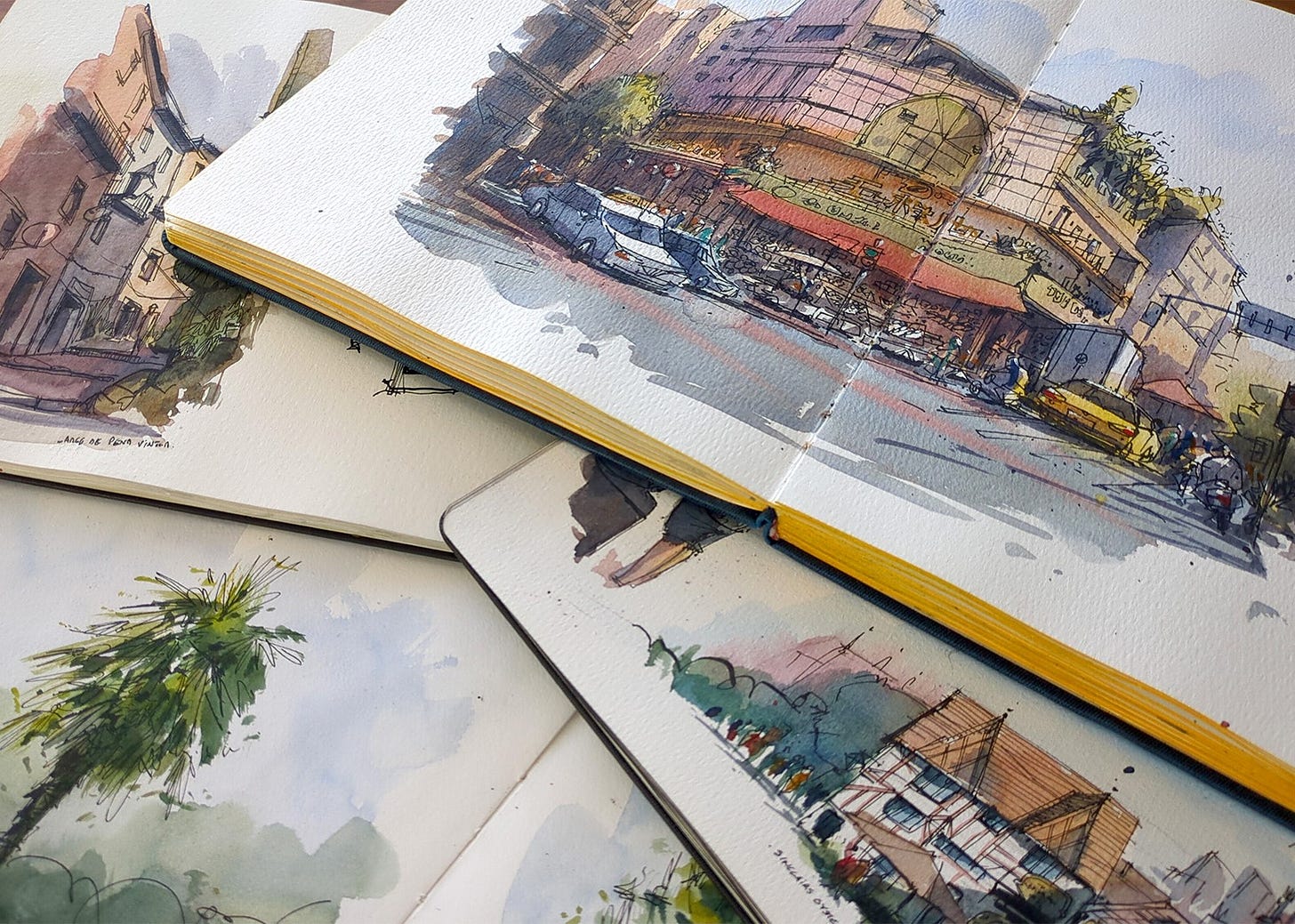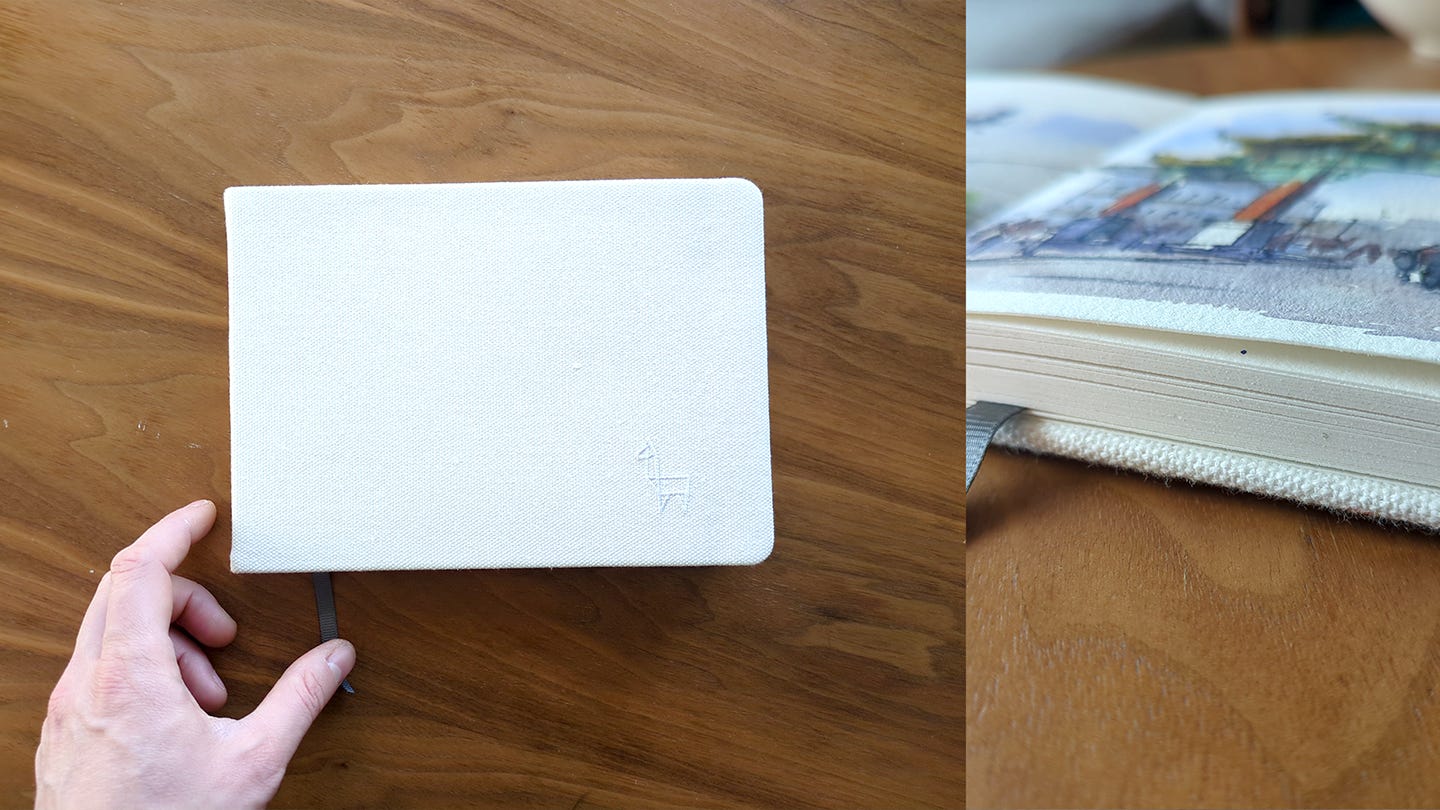I've been thinking about what makes a good sketchbook
Turning the page on my assumptions, if you will.
I’ve kind of come to the belief that the perfect sketchbook doesn’t really exist. But it has prompted me to think about what characterstics a good sketchbook should have and why this is important.
Every time I pick up a new sketchbook to test I’m always on the look out for ‘the one’. A book that perhaps I could keep using from now until eternity. For all my searching I’m starting to get the feeling that such a book does not exist although there are many that come mighty close.
There are a few things I look for with a watercolor sketchbook and it may surprise you that it’s not all about paper. Now I’m an ink and wash kind of guy. It’s not just about paint but also about how the ink works on the page. There are many brands of conventionally excellent watercolor paper that aren’t great to draw on with ink. Rough-textured paper is fantastic for water rentention and brush strokes but aren’t well suited to quickfire ink strokes.
One of my biggest interests is travel, whether that’s local or something further afield. For this I rarely take photos so my little sketchbook is one of my few windows to the world. For this reason I need to make sure that It holds up to a bit of wear and tear along the way. My preference is hard back sketchbooks. The kind with sturdy binding and an elastic band to keep everything contained. Over the years I’ve subjected many sketchbooks to perhaps some undue stress. I’ve thrown them in hiking backpacks, on park benches and occasioanlly on grassy fields. Whereever I am painting my sketchbook comes with me so naturally it needs to hold up.
I’ve been ‘stress testing’ a lot of sketchbooks in my latest Patreon article where I take a more granular, long-term look at five of my most trusty favourites. Unlike many other formal online reviews, which I often look at for new books, my examinsation come with the benefit of months and even years of usage. I know how most of them hold up over time rather than just a one-off test.
When I began to write this some things surprised me. For instance, one sketchbook brand I had written off years earlier I was still using for their minature books. Why?Withouth realising, I discovered their smaller offerings held up much better than the A4 versions. Those limitations at the larger sizes actually worked better when the scale was reduced. Again, I think this is something that we can only really learn with a bit of time and patience.
I’m often a fan of the so-called cheaper sketchbooks. I find that some of them are better suited to ink drawing than their higher-quality cousins. The top-tier paper can work well for watercolor but perhaps is less suited to smooth lines and expressive sketching than you might expect. After all, a good drawing has less to do the quality of the paper than a painting does - in my humble opinion.
If I had to pick a perfect sketchbook it would probably be a combination of sturdy, thick cold pressed paper made from 100% cotton. Landscape format with a matte finish cover and strong binding. It would probably be an “awkward” size between A5 and A4 that I’m confident most companies are unlikey to do. Maybe this sketchbook is out there? Maybe I just haven’t discovered it yet.
I’ll keep looking for that perfect sketchbook though and trying to challenge my own assumptions about what the best characteristics are.
The full sketchbook ‘stress test’ article is available over on Patreon.






Yes, always looking for the perfect sketchbook!